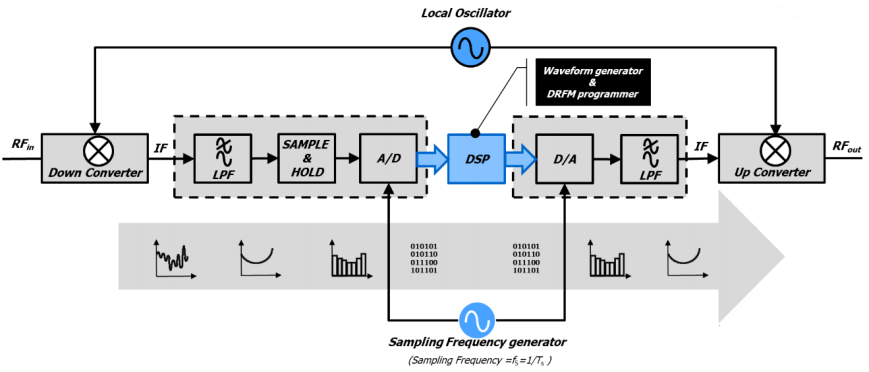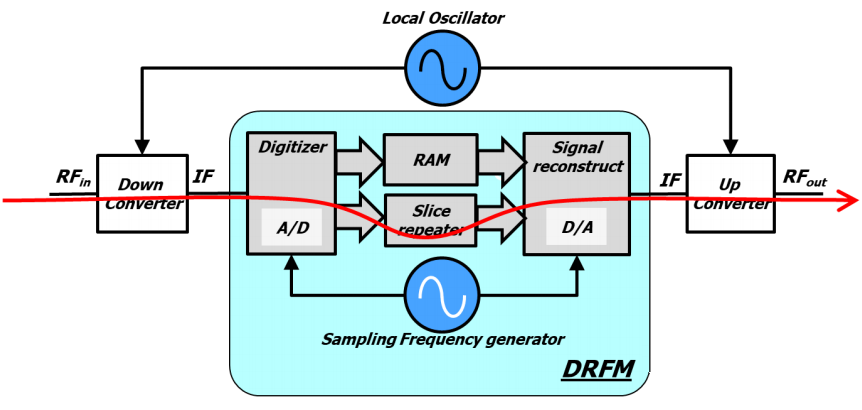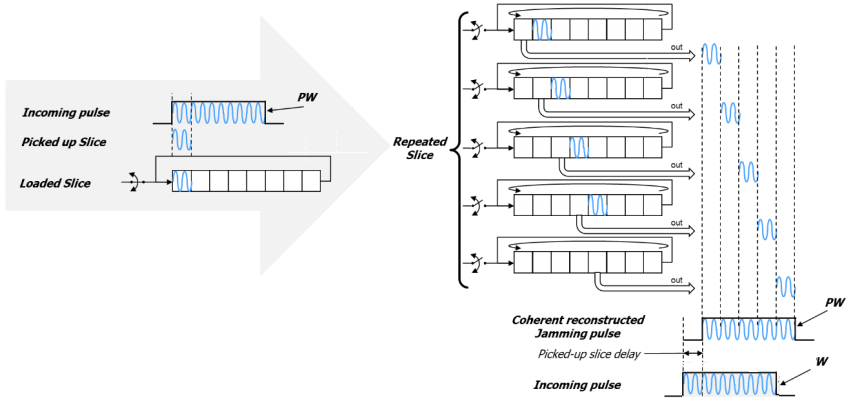Is Digital Radio Frequency Memory (DRFM) suitable for deceptive interference?
Intelligent jammers, also known as misleading jammers or digital radio frequency memory (DRFM) jammers, are typically used in national defense to confuse enemy radars and protect their own positions.
DRFM technology requires sampling, digital storage, and recovery of RF signals, and modification of some or all of the signal's properties based on deception techniques.
The DRFM system digitizes the received RF signal with appropriate frequency and bandwidth, and then recreates the RF signal as needed. The most critical feature of DRFM is that it overlaps with the received signal, becoming a digital 'replica'. It continuously cycles the energy of the front-end amplifier without causing signal degradation, providing a larger spectrum of interference effects than analog circuits.
Typical features of a DRFM system
Coherent delay that can generate RF signals (usually in radar applications)
Create cohesive deception jamming (intelligent jamming) against enemy radar systems
Through a brief delay, the captured radar pulses can be replayed.
The change in false target delay may cause it to appear to be moving.
Other interference effects can be generated by modulating the amplitude, frequency, and phase of the collected pulse data.
The range tracker and range rate tracker in radar are interrelated by increasing the Doppler frequency shift.
Repeated replay of the collected pulses can result in a large number of false targets
DRFM can generate any waveform based on the file.
When processing radar using linear frequency modulation, use DRFM jammer (LFM)
2. Continuously developing DRFM interference technology

Modern DRFM features include smaller compactness, faster response, and a large amount of low latency computing power. The core of superheterodyne receiver is DRFM. The core structure of the interference system is composed of it. To avoid interference, narrowband signals must be processed simultaneously in the interference system.
DRFM has complex programming function (based on digital signal processing technology generator), can produce many false echoes with complex kinematics rules and waveform synthesis, and can realize coherent technology (coherent copy of received signal).
Coherent replication requires the use of the same threat radar signal as the interference signal seed, resulting in the interference signal being unable to be detected from the real echo and processed at the same processing gain (increased J/S ratio).
Coherent copy is used in deception techniques to adjust the distance between two points by transmitting pulses with various delays relative to the real echo (distance gate extension/closure) or relative to the real echo transmission (speed gate extension/reduction). To modify the speed, a signal with variable Doppler frequency shift is used.

The signal in DRFM can also be used as a noise modulation seed. Therefore, in this way, the noise is adjusted to the radar instantaneous frequency bandwidth or Doppler bandwidth. The goal of this technology is to minimize enemies by generating a noisy Doppler frequency band centered around the true Doppler of the target (such as shielding the velocity gate of a semi-active seeker). The ability of square radar to detect and track target Doppler.
Using the received and stored signals as RF carriers (generating coherent noise) can improve the performance of interference noise and better match the radar bandwidth (which is for relative noise), rather than using locally synthesized RF carriers (non coherent noise). Participating in radar is very important
When adding interference, the interference noise performance is defined as the reduction of the global signal-to-noise ratio (S/(N+J)), which depends on the matching between the interference signal and the real echo (how much interference signal can enter the radar matching bandwidth to obtain the processing gain of the radar) and how much noise characteristics can be assumed to be similar to thermal (Gaussian) noise.
The Noise Quality Index (NQI) is determined by the Gaussian nature of interference noise and the ratio of interference bandwidth to radar matching bandwidth (when the ratio factor of minimum interference BW to radar BW is 3, good noise quality is obtained).
In order to tune the interfering carrier to a target that threatens the RF range or perform coherent interference, continuous noise generation in the forwarding mode requires periodic switching of transceivers to receive, store, and process interfering carriers (coherent interference) before transmission. Receiving signal
Naturally, if the pulse property does not change over time, previous pulses can be used to construct the current coherent copy. If the pulse characteristics change, all pulses must be received; However, if the jammer obtains a complete pulse, it cannot be broadcasted during the reception and acquisition stages, making it impossible to construct a false target closer to the pulse width.
Three Slice Repeaters

Slice repeaters are also coherent DRFM functional modes, which can reconstruct coherent interference copies using only a small portion of the received signal (slice). Before the end of the received pulse, only a limited amount of time is allowed for reception and transmission: only one RX and TX switch is connected within the pulse.
This technology can achieve coherent capture and playback operations to generate copies with high phase and frequency coherence, ensuring that the radar receiver has sufficient correlation (in the case of radar matched filtering).
The use of four misleading jammer
The DRFM jammer has developed into an important component of complex electronic attack (EA) packets. It has evolved from a simple forwarding system with limited attenuation to a powerful electronic attack weapon.
DRFM can be used to verify the accurate operation and timing of system level deception technology, test various components, submodules, and modules at the RF/IF level, and ensure that clock jitter and power integrity issues are corrected as soon as possible.
-
Whatsapp

